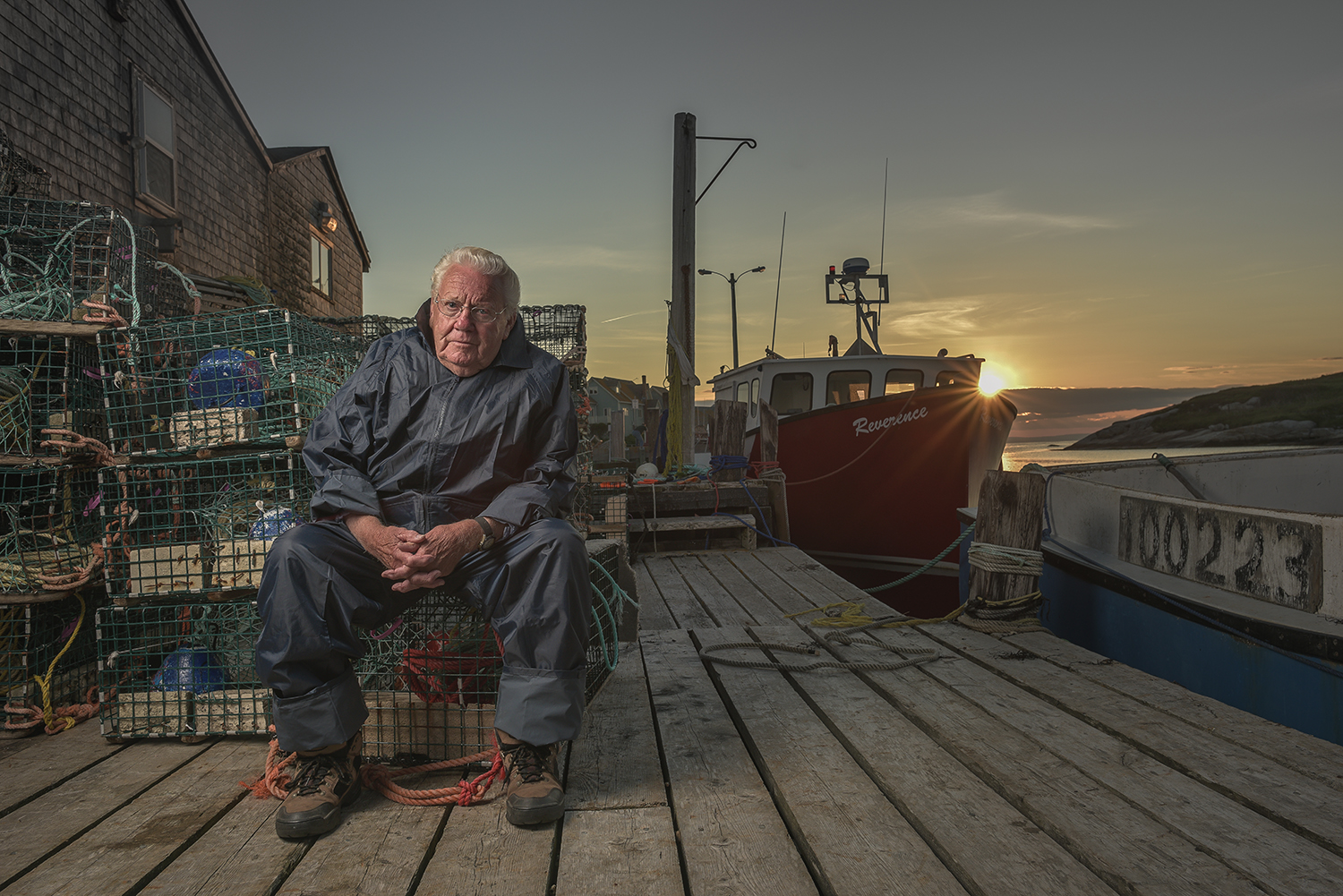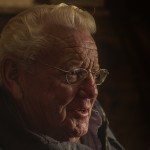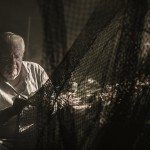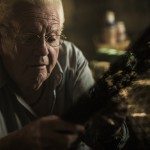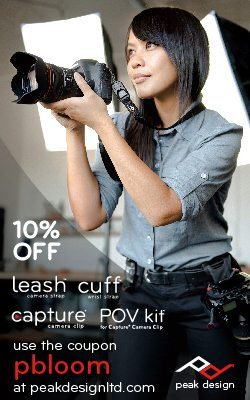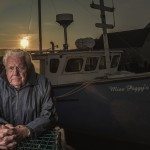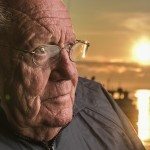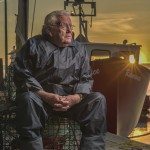
Philip: Whilst I won’t be reviewing the Nikon D810, mostly due to the absolutely lack of any free time to get it done, you can read about it and see the images from it thanks to my buddy Preston Kanak’s guest post below. My Sony A7s review is coming soon, after that I won’t be able to do anymore camera reviews for the foreseeable future due to my filming commitments for the next few months.
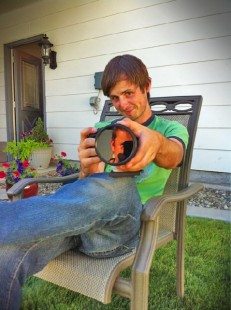
That’s me in the reflection!
Earlier this year, NPS Canada & Nikon Canada contracted us to shoot a short film utilizing the new Nikon D810. What we wanted to do with the project was find a way to showcase the capabilities of the camera while also telling a story. For this project, we chose to produce a full campaign that included a short documentary, behind the scenes film as well as a photo series. As for this post, what we want to do is give you a look at how we approached this project. We will be looking at:
- Importance of developing a detailed proposal
- Why Collaboration is important
- How to develop a comprehensive Pre-production strategy
- Value of Open Communication with Client
- Importance of Clear Objectives & Deliverables
Like with any campaign, it is imperative that a strategy is developed early on so you have a goal you are working towards. With this project having such a quick turnaround, like is a lot of the time, it was imperative that we had our plan clearly laid out to ensure delivery on time. Our approach with this project was to craft the story before we even started shooting. Before going any further, we must state that we are a new company and as such, we are just talking from our personal experiences and are learning with every project we produce. It is a learning process and we continue to refine our workflow with every project. Below we have attached the final short film we produced for the project. The BTS has also been attached lower in the article. It can be accessed by clicking here.
Importance of developing a detailed proposal
As much as many may not enjoy developing proposals, it is an essential part of the process. For us, we view it as a critical part of the process and the first chance you have at impressing your client on your work ethic and attention to detail.
Proposal Breakdown
When approaching our proposal, we wanted to paint a clear picture of what we wanted to produce. We broke down everything from our story to the characteristics of our lead character. We were looking at shooting a documentary on a fisherman and did not have a candidate secured when developing the proposal so we had to develop a character profile to help explain what we were trying to do. Our strategy with all proposals is to include as much information as possible to help when approaching production. We have included a few screen grabs from the proposal.
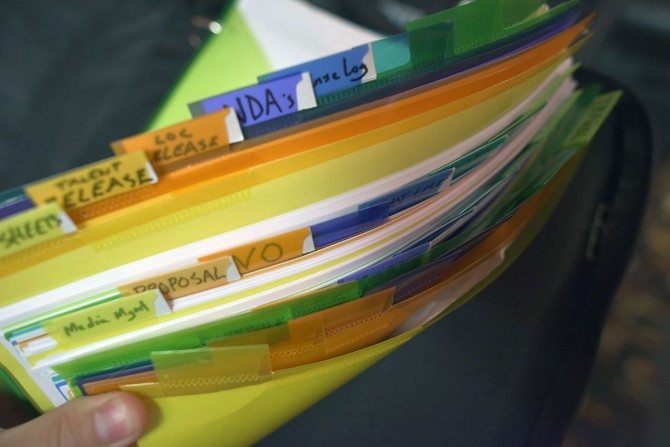

Project Introduction
A legacy is built upon a foundation of passion and perfection that extends far beyond a lifetime. This legacy is carefully refined with every decision that is made. Be it a fishing operation or the refinement of a digital camera, these decisions are what shape an industry.
For this project, our goal is to showcase what the D810 was capable of producing in both still and video formats. A photo series, a 30 second teaser, three minute documentary and BTS video was produced that showcased the capabilities of this camera while focusing on the technical specifications that make this camera unique. This campaign was not only the current customer base but also the general public because of the format of storytelling.
Story Development
Every Moment Counts is a short that follows the journey of Manny Vaughan who has been fishing for 70 years. This film features his journey of passion and drive through his many years living and breathing on the open sea.
When breaking down the story, there were a lot of things we had to consider. We had a rough idea of the story we wanted to tell that we developed in the pre-production / proposal stage and it was imperative that we hit our key story points. When we started to collect story points, our first goal was to do a sit down interview with our lead character, Manny. This interview went on for about an hour and a half. What was great about it was that it didn’t come across as an interview, rather, a conversation between two people. This was a great approach as we were able to have a real conversation with Manny and we were able to get him to open up.
Regarding story points, the story we really wanted to tell was that of a fisherman who has fished his whole life. He is a character that cares deeply about his family but also about fishing. The major conflict developed in the story was the sea. What we wanted to do was turn the ocean into a character and place it as the antagonist of the story. By doing this, we feel we were able to develop our story points.
Our story opens with Manny talking about the power of the sea and reveals the inciting incident that you must not take the power of the sea for granted. It is a powerful force and it is key to respect it. In the way he delivers the lines, the subtext is that he knows this through personal experience and sets the stage for the rising action and climax that occurs later in the story.
For this piece, we setup the story in a way that first introduces Manny and then goes on to reveal that he has lived a hard life and this is paralleled through his voice – which is rugged, coarse and aged. We felt that this really aided in this idea of growth, experience and age. After establishing who Manny was, we then went on to introduce to the audience about his life and experiences with fishing. We started with some early memories fishing with a safety pin and how when he finally got real hooks, he thought he was ‘big time’. We see through the way that he delivers his story that he truly loves fishing.
Our first plot point or point of conflict is in his description of his fear for the sea. We find out early that even though he has a fear for the sea, fishing overcomes this fear and it is this passion that keeps him coming back. As the story continues, we revisit the idea that the sea is a place to fear and to not overlook this power. He reinforces this power by revealing one of the main reasons he fears the sea. This loss of his friends of sea still haunts him and it was our goal to capture this emotion. We did this by showing him for the first time on camera. As we move closer on his face, we see his eyes wheeling up with tears.
Our resolution to the story revisits his love for fishing to show that no matter how much fear exists, it is the love for the task that keeps bringing him back. His connection with family and friends is his guiding light and is what truly makes him happy. At the end of the day, what we wanted to leave the audience with is a story about the value of family and how activities such as fishing can bring people together. Our focus on the act of fishing and commitment demonstrated through the 70 years truly shows the role passion plays and how it is critical in living a satisfied life.
Character Breakdown
Our focus is on the small rural fisherman who has been able to do what he loves while still being able to support his family at the same time. Our focus isn’t just about the success of catching fish – it’s about the journey. Work-life balance has always been a challenge but this is normal. A culture breeding a work ethic built on hard-work and long hours has allowed our lead character to continue to build on the family legacy.
When selecting our candidate, it is key we find someone who is nearing retirement but has lived a long and full life. We will target an active fishing community that is struggling to make ends meet with the new regulations being introduced that limit the opportunities for small operations to succeed. We are not making a statement about the industry, rather showing that no matter the obstacles, passion is what keeps these operations running.
Bringing The Proposal To Life
Our goal with this production was to try bring it to life as close to our proposal as possible and we felt the best way to do this was to immerse ourselves in the local culture and spend as much time with the locals as possible. We became regulars at a few places on our trip – from the breakfast joint (Eat Restaurant) to the restaurant at the top of Peggy’s Cove for our double Espresso and Kahlua and a cookie (you had to eat to have a drink and that was the cheapest thing on the menu :)). Immersing yourself in the local landscape is imperative. We would not have been able to accomplish what we did without having made friends with the locals.
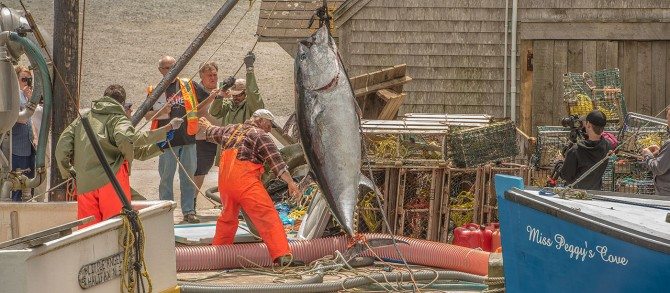
Why Collaboration is Important
With any project, finding a strong team is imperative. For this project, we had a great team that helped with the process. From creative to photography to locations, I relied heavily on the help of the entire team. At the end of each day, we would go over rushes and talk about how we could approach the next day better. With all projects, it is key that you make the working environment one where people feel they can give creative input, no matter if they are above or below the line. The one aspect that was a bit unique for us on this project is that we brought in a musician to produce a custom score for the film.
Offering Creative Liberties to Collaborators
Being in a place to offer creative control to various team members is a valuable tool – albeit stressful unless you completely trust these team members. For this project, we brought in Karrnnel Sawitsky. I’ve worked with him on two other projects and felt he would be the perfect fit for this project. When he arrived on location, we already had a locked story edit and were able to give him something to work from. When he arrived on location, we had told him that the temp track that we were using would be tough to beat with the custom score.
The Music
We talked in depth about our approach for this project and knew the impact the music would have upon the story. We wanted to craft a song that also told it’s own story – one that would accent the visuals we had in place. There were certain spots that I wanted certain emotions to be hit but overall, I left Karrnnel with the creative liberties to go in the direction he felt best.
After hearing the edit and talking with crew members, many liked the vibe of the original temp track that Karrnnel had previously recorded but I felt that going with new track – although riskier – would be the better route to go as it felt right the more I worked with it. Sometimes you just have to go with your gut. Sometimes it works. Sometimes it doesn’t. For me, I feel that the track we chose is perfect.
Obstacles
I think our most challenging part was finding our local talent. It was absolutely amazing how everyone was willing to help without asking for anything in return. People just opened their doors for us and this was really quite amazing! I’m not sure we would have had this experience in too many other places.
Our first major obstacle that we had to overcome was to secure talent and locations. Before landing in Nova Scotia, we had one potential candidate lined up and although he had a great story to tell, it wasn’t quite what we were looking for. We then spent the next four days searching out new talent as well as locations.
Our biggest word of advice for others looking to produce something similar is to immerse yourselves as much in the local culture as possible. Talk with the locals. Make friends. Ask questions. Introduce yourself and most importantly, be friendly and show interest in what they have to say.
How to develop a comprehensive Pre-production strategy
Once you have secured the project and contracts are signed (if you decide to use them), the next plan of action is setting the project into motion. I will generally start by breaking down the key objectives and then move to develop scripts that achieve the core objectives. No matter how large or small a project is, I will also develop a comprehensive strategy. This process is usually fairly straightforward as we generally spend a lot of time crating the proposal so a lot of the heavy lifting is done upfront. Attached is a screen grab of a table of contents that would generally be included with a proposal.
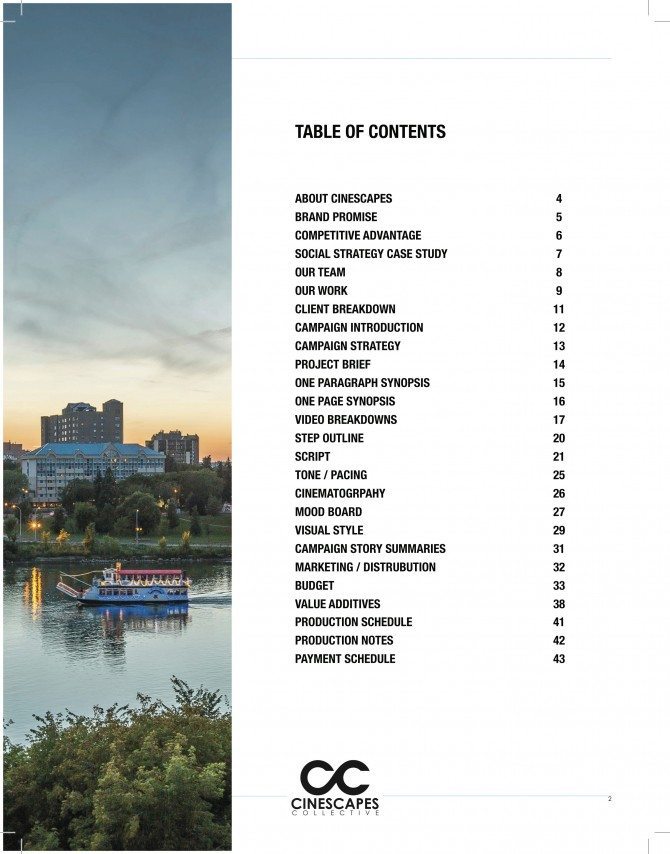
Regarding pre-production, the key things we prepare are the scripts, scouting, schedules and crew / gear breakdowns. Because we will generally breakdown the creative elements in the proposal, we are able to move directly into refining our concepts and prepping the shoot.
We start by assembling a production binder to use for production. We take our proposal and parcel it out into the different areas of production. We make sure we have all releases, NDA’s, travel information or any other pertinent information we may need for the shoot. We also make digital copies that are available to all crew members during production. We still find it handy to have paper copies on set in case any last minute questions come up.
We manage all productions using dropbox teams and have attached a breakdown of the folder structure below.

By having a template folder to work from, and using colour coding of folders, we are able to see what still needs to be done and what has been done. We can assign folders and tasks by dual colour coding folders to show who is doing what. As we start to turn folders green, we then print off the content in the folder and add it to the production binder.
Value of Open Communication with Client
A positive working relationship with clients starts with transparency and open communication. For us, this is extremely critical and something we are always working to improve. If open communication is established early on, the entire process goes much smoother. Gaining the trust of your client also sets up for a good working relationship that goes beyond the project you are working on and potentially leads to more work. Lay out beforehand what can be expected from the production and ensure that clear timelines are established and met. Whether or not there is a hard deadline for a project, set one and lay out all elements of production that need to be completed. We will usually show the client this timeline and provide updates along the way.
Importance of Clear Objectives & Deliverables
The first critical step is the breakdown the deliverables and to set out the clear objectives for the project for both the client as well as your teammates. By having clear objectives, not only do you have something to work towards, but you also have an outline of expectations for the project. For this project, we wanted to produce a documentary, behind the scenes film and photo campaign. All of these assets were to be delivered on July 6th. Because of the tight turnaround, we knew we had to start working on the project as soon as possible as we were set to land in Nova Scotia on June 16th.
THE DOCUMENTARY
For our documentary, we had a concept breakdown developed before landing and had an idea of the key story points. We had the questions prepped before finding our lead and catered, as we needed to ensure we captured the story we needed. We shot the interview on day five and by doing this; we were able to cater our supporting footage based on our locked story edit.
BEHIND THE SCENES
Before landing in Nova Scotia, we already had our intro and our script written and recorded and our music selected for the piece. All we had to do while on location was shoot the interviews and supporting footage.
For this film, we separated the days in which we shot our interviews, as we wanted to shoot the final interviews as close to the delivery date as possible to include a comprehensive coverage of the project. For the crew that wasn’t on location for the entire shoot, we did their interviews first and edited the sound bites right after the interview. For the rest of it, we pushed hard to assemble the edit right after we filmed the interview so we could start putting together a rough assembly as early as possible.
DELIVERING ASSETS ON TIME
Our other major obstacle was delivery time on assets. We were shooting right up to July 4th so we had to start working with our assets right on location. Without having done the prep before hand, we would have had no chance at finishing before our delivery date. The second we got green lit, we started to prep all assets including the selection of music for the behind the scenes, graphic treatments and other elements. Anything we could start beforehand, we did.
The Edit
With the quick turnaround we had for this project, it was key that we started the edit while on the road. With the long distances between locations, we decided to put the edits together while driving. This was a great way to review footage we just shot and start to see the film take shape. By doing this, we were able to quickly see what we still had left to film and were able to adapt the project as we worked on it.
The Grade
For people curious about what the footage out of the new camera looks like, we have included a side by side comparison with the raw footage beside the graded footage. We added sharpness to the raw image as it is easier to see the gradations in the raw footage. Outside of the sharpness, the footage is untouched.
Wrap-up
A reality of a lot of productions is that there isn’t a lot of time from pre to post. This process, depending on the complexity of the shoot, can be very challenging. What we hope we were able to do with this post is help with the process – even if only in a small way. If you have any questions or would like to hear more about any aspect of the process, do not hesitate to ask and we will try include it in the post as well!
If you would like to find out more or hear our thoughts on the camera, make sure to check out our post on the Cinescapes blog.

